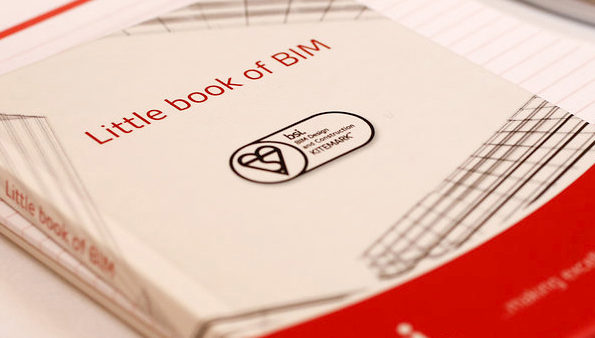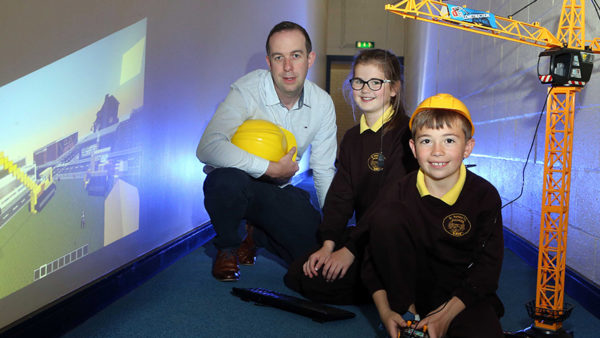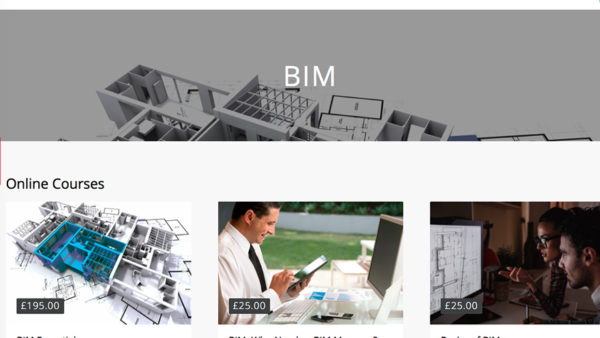Ten of billions of pounds of public money are spent on centrally-funded construction projects in the UK every year. The government is concerned that millions of pounds of this may be wasted as a result of unclear, inaccurate or incomplete information being used during and after the construction process.
As part of a strategy to reduce the capital and operational costs – as well as carbon emissions – from the construction and operation of the built environment, the government requires that all centrally procured public building projects will use Level 2 BIM as a minimum by 2016.
BIM uses defined processes and software tools to create a visual model of a building (or road, bridge, tunnel, etc), to which is attached physical and functional information covering its entire life cycle. This includes data on the quantities and properties of materials, components and systems – and the relationships between them – along with factors such as project targets and post-construction facilities management.
The aim is to produce a model that reacts to change in the same way that the real building does. This shared knowledge resource is generated collaboratively, reflecting the collaborative nature of the actual project. It can then provide a reliable basis for decision-making throughout the life cycle. For example, the design team can try out material, component and design variations on the model to demonstrate the consequences of every choice.
Early BIM demonstration projects have achieved savings of around 20% during the construction phase, with some on course to make considerably greater savings over the life of the building.
There is a range of BIM levels of maturity (0-3) which this form of modelling can take. Levels 0 and 1 use CAD (computer aided design). Level 2 – the minimum requirement for centrally funded projects from 2016 – involves a 3D model with data attached in separate elements for construction sequencing, cost and lifecycle management information. The ultimate goal is Level 3 in which these disciplines are all integrated into a single model.
A PAS (Publically Available Specification) document, PAS 1192-2:2013*, provides guidance on the processes and procedures required for delivering public projects using the BIM approach. It works in concert with BS 1192, the code of practice for the collaborative production of architectural, engineering and construction information. These documents support and underpin the delivery of Level 2 BIM compliance.
Courses are now available to prepare built environment industry professionals for the delivery of BIM Level 2 projects. BRE Academy, for example, is providing a BIM Level 2 Training and Certification Pathway in collaboration with Avanti Partnership. This is designed to help construction professionals develop the necessary skills to meet the BIM challenge and gain a recognised qualification in this field.
“With our involvement at the cutting edge of BIM standards and research and working with our partner Avanti Partnership, we are one of the few organisations that can provide an independent, in-depth training on BIM,” says Pauline Traetto, director of BRE Academy. “We are the only organisation currently providing this training to BIM Level 2, in accordance with PAS1192/2 and BS1192.”
PAS1192-2:2013 identifies specific roles to facilitate the delivery of information. These are termed Information Manager (project or task) and Project Delivery Manager. The BRE/Avanti training and certification pathway comprises a series of BIM accredited training programmes and examinations leading to certificated professional status within these roles.
For Information Managers, the BIM Level 2 courses involve two days of training followed by an examination. Information Managers have a key role in ensuring that all members of the team implement the necessary standards, methods and protocols, and that the checks required before sharing data have been carried out to meet compliance. This role is likely to be fluid within the design-build-manage process and is not associated with a specific profession or job title. There are two levels of Information Manager: BIM Level 2 Task Information Manager (TIM); BIM Level 2 Project Information Manager (PIM).
For Project Delivery Managers there is a three-day course and the examination provides training that leads to BIM Level 2 Project Delivery Manager (PDM) certificated professional status.
Those successfully completing the BRE Academy/Avanti Partnership training and exam are then certified as qualified practitioners under a certificated professional scheme conducted by BRE Global, the BRE Group’s independent certification body.
Nick Tune is a director of BRE with responsibility for digital products, and also a director of BuildingSMART UK. More information on the training and certification pathway can be found at www.bre.co.uk/bim
Comments
Comments are closed.














Hi,
I need to have passed PAS 11922 to achieve constructionline is the way to achieve this to pass the BIM level 2 course?